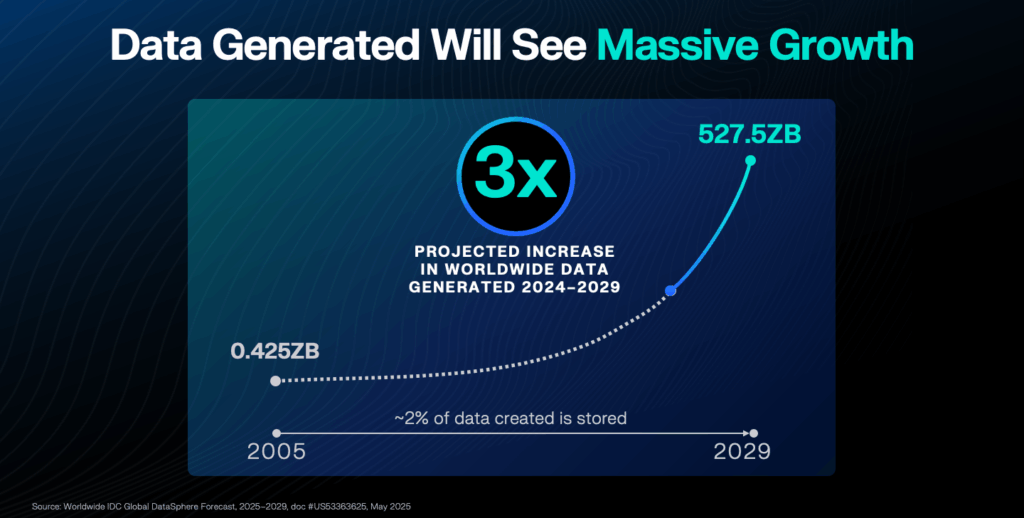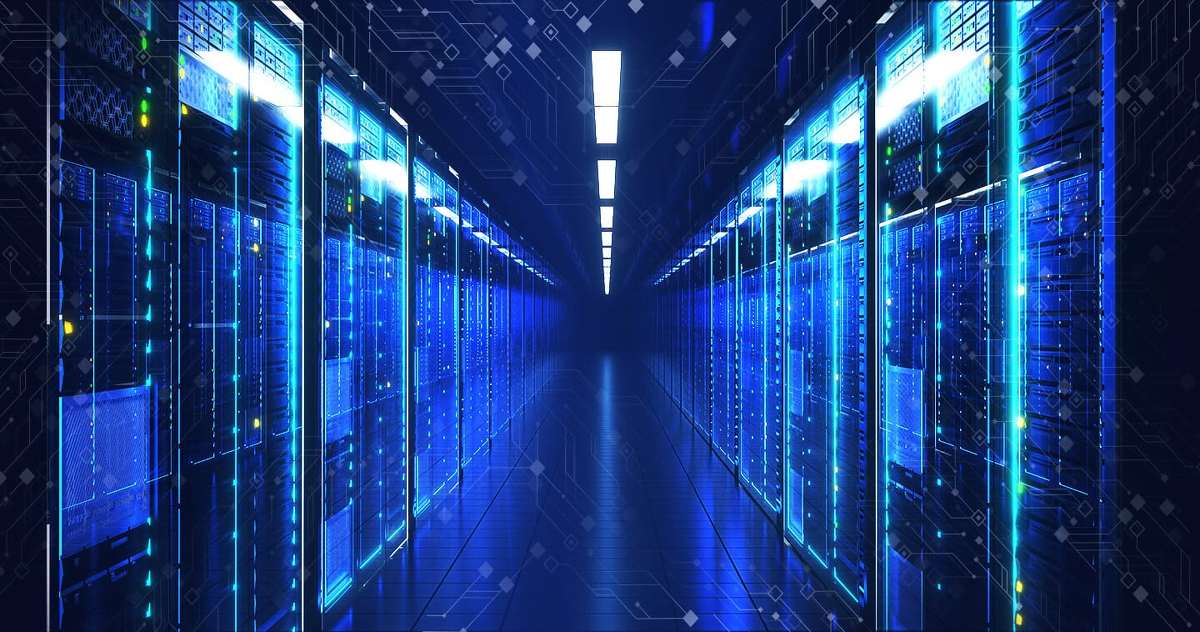The Central Role of HDDs in AI Storage
Artificial intelligence (AI) is impacting almost every aspect of our lives, transforming entire industries in the process. With everything speeding up and shiny new objects capturing people’s attention, it’s easy to assume that all legacy technologies are on their way out. When it comes to hard disk drives (HDDs), however, the exact opposite is true. As AI and machine learning consume and generate almost unfathomable volumes of data, the global economy has never been more reliant upon workhorse HDDs.
“You don’t have AI without data, you don’t have data without storage.”
– Western Digital CFO Kris Sennesael
Whether it’s text, images, or videos, AI systems can require massive datasets to function effectively. According to IDC, the amount of data the world generates is expected to more than triple from 173.4ZB in 2024 to 527.5ZB in 20291, driven in large part by AI and cloud computing. Spending on data center construction has surged alongside this growth, hitting a record $40B in June 2025.

Why HDDs Remain the Backbone of Storage
Playing an outsized role in what Asa Fitch of the The Wall Street Journal calls “artificial intelligence’s voracious consumption of digital storage” is the HDD. A large part of that is because of the technology’s reliability. Enterprises know that training large AI models is a resource-intensive process that can take weeks or even months. Storage devices have to run 24/7 throughout, standing up to the rigors of continuous reading and writing. If a storage device fails and data gets corrupted or lost, it can have a huge impact in terms of time and money and even the AI model itself.
Reliability also means the storage devices must be able to handle different customers’ unique needs. At Western Digital, we not only build our HDDs to hold up under a wide variety of conditions, we also collaborate closely with customers to model real-world scenarios. Through our network of System Integration and Test (SIT) Labs, we work with customers to develop, test, and validate deployments to ensure Western Digital products are fully qualified for customers’ specific workloads.
However, as important as reliability is, there’s another factor that’s responsible for the dominance of HDDs in the data center in particular: total cost of ownership (TCO).
HDDs vs SSDs: Economics of Scale in AI Workloads
Some see AI leading a resurgence of HDDs, but the truth is, hard disks already make up approximately 80% of data storage—and are predicted to do so for the foreseeable future.2 The reason for this is straight economics: when it comes to large-scale data storage, increasingly fueled by AI workloads, HDDs are far more cost-effective than flash-based solid state drives (SSDs).
As Fitch explains, “Although SSDs can be quicker in accessing and transferring data, hard drives are significantly cheaper to buy and operate.” SSDs’ speed makes them ideal for frequently accessed, or “hot,” data. However, the vast majority of data in data centers is “warm,” needing less frequent access, so latency is not nearly as important as cost when it comes to storage. This is where HDDs show their true value—delivering essential reliability at a much lower TCO compared to flash.
Pushing the Boundaries of HDD Technology
Western Digital has long pioneered advancements that have led to massive capacity and improved cost-effectiveness, keeping us at the forefront of the growing demand for data storage. Through innovations like heat-assisted magnetic recording (HAMR) technology, we are poised to deliver even higher-capacity drives that will allow HDDs to maintain their TCO advantage.
“Boring can be bountiful.”
– Asa Fitch, The Wall Street Journal
While remarking that there is some risk associated with the current upsurge in HDD sales being dependent upon the continued rise of AI, Fitch also notes that the AI boom is different than other technology transitions including previous periods of data storage growth because even after companies have trained their AI models, they “tend to keep [the data] on hard drives rather than deleting it when they’re done.” And, “more crucially, perhaps, AI self-generates a lot of data in the form of text, pictures and increasingly video that needs to be stored somewhere.”
So while SSDs may grab more headlines, HDDs are being increasingly recognized for the central, indispensable role they are playing in the AI revolution, with Western Digital garnering the attention and confidence of industry analysts. Thanks to their scalability, cost-effectiveness, high density, and high reliability, HDDs will continue to serve as the backbone of the data center, powering the data-driven world of tomorrow.
Want to learn more? Read about the case for HDD storage.
- Source: Worldwide IDC Global DataSphere Forecast, 2025–2029, #US53363625 May, 2025
- Source: IDC, Worldwide IDC Hard Disk Drive Forecast, 2025–2029, doc #US53465525, June 2025 and IDC, Worldwide IDC Solid State Drive Forecast Update, 2025-2029, doc #US52455725, June 2025




